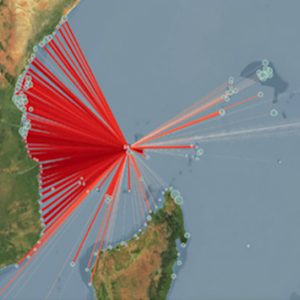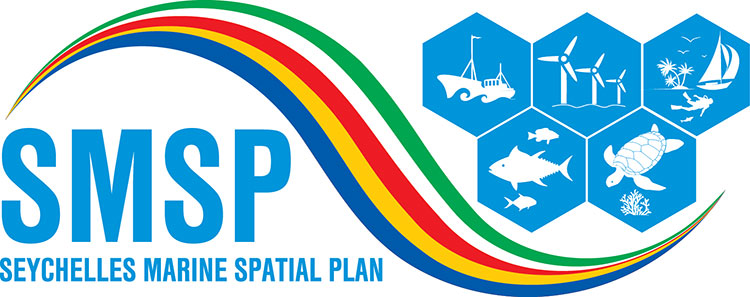 The islands of Seychelles are wrapped in coral reefs, living rainbows in fantastical shapes of Gothic cathedral spires and delicate lace fans. These reefs send out coral larvae that are carried by ocean currents to new destinations – gifts from Seychelles to other nations.
The islands of Seychelles are wrapped in coral reefs, living rainbows in fantastical shapes of Gothic cathedral spires and delicate lace fans. These reefs send out coral larvae that are carried by ocean currents to new destinations – gifts from Seychelles to other nations.
Where do the baby corals go? Answering this question is important for marine conservation, to predict the potential of coral reefs to recover from bleaching events and adapt to a warmer ocean. For the first time, a new app – Coral Connectivity – makes their journeys visible. With just a click one can see that the Outer Islands – including UNESCO World Heritage Site, Aldabra Atoll – disperse coral larvae to reefs across much of the east African coastline.
The app was built on the first in-depth coral reef connectivity study in Seychelles and the wider Southwest Indian Ocean. In partnership with the Seychelles Islands Foundation (SIF), and with funding from the National Environment Research Council (NERC) and Seychelles Conservation and Climate Adaptation Trust (SeyCCAT), University of Oxford researchers Noam Vogt-Vincent, April Burt and other scientists used high-resolution ocean surface current predictions to simulate the dispersal of coral larvae between all coral reefs in the region. Oxford scientist Dr. Vogt-Vincent explains that “the connectivity modeling was compared to population genetics and species distributions to tease apart the physical and biological drivers of larval dispersal and connectivity.”
With the Coral Connectivity app, these cutting-edge data can be used to support reef management and restoration in Seychelles, the implementation of the Seychelles Marine Spatial Plan (SMSP) and bolster local and regional policy.
This project received a Blue Grant Fund from the Seychelles Conservation and Climate Adaptation Trust (SeyCCAT), an independent trust established in 2016 for the world’s first ocean debt conversion. A partnership between Seychelles and The Nature Conservancy for a 30% ocean protection goal and a Marine Spatial Plan, the debt conversion generates approximately USD $430,000 per year for conservation and climate change adaptation. Blue Grant Fund projects help secure ocean biodiversity and support a thriving Blue Economy in Seychelles. This project was featured in The Nature Conservancy’s Africa Year in Review 2023.
For those interested in the technical specifications of the Coral Connectivity high-resolution ocean model, please see the references below. In brief, the high-resolution ocean model generated predictions of surface currents every 30 minutes from 1993 to 2020 (along with other oceanographic variables at less frequent intervals). The larval dispersal simulations predict the movement of coral larvae between all pairs of over 8000 coral reefs in the southwest Indian Ocean, for around 10,000 virtual mass-spawning events. All data (oceanographic, genetic, and coral connectivity) are openly available in full.
References:
Vogt-Vincent, N.S. and H.L. Johnson. 2023. Multidecadal and climatological surface content simulations for the southwestern Indian Ocean at 1/50° resolution. Geoscientific Model Development. 16: 1163-1178. Open Access: https://doi.org/10.5194/gmd-16-1163-2023
Vogt-Vincent, N.S., S. Mitarai, and H.L. Johnson. 2023. High-frequency variability dominates potential connectivity between remote coral reefs. Limnology and Oceanography. 68(12): 2733-2748. Open Access: https://doi.org/10.1002/lno.12455
Credits:
The Coral Connectivity app is based on coral larval dispersal simulations run by researchers at the University of Oxford, led by Noam Vogt-Vincent, April Burt, and Helen Johnson. The interactive web app was conceptualised by Noam Vogt-Vincent and Otis Brunner, and developed by Julia Janicki.
